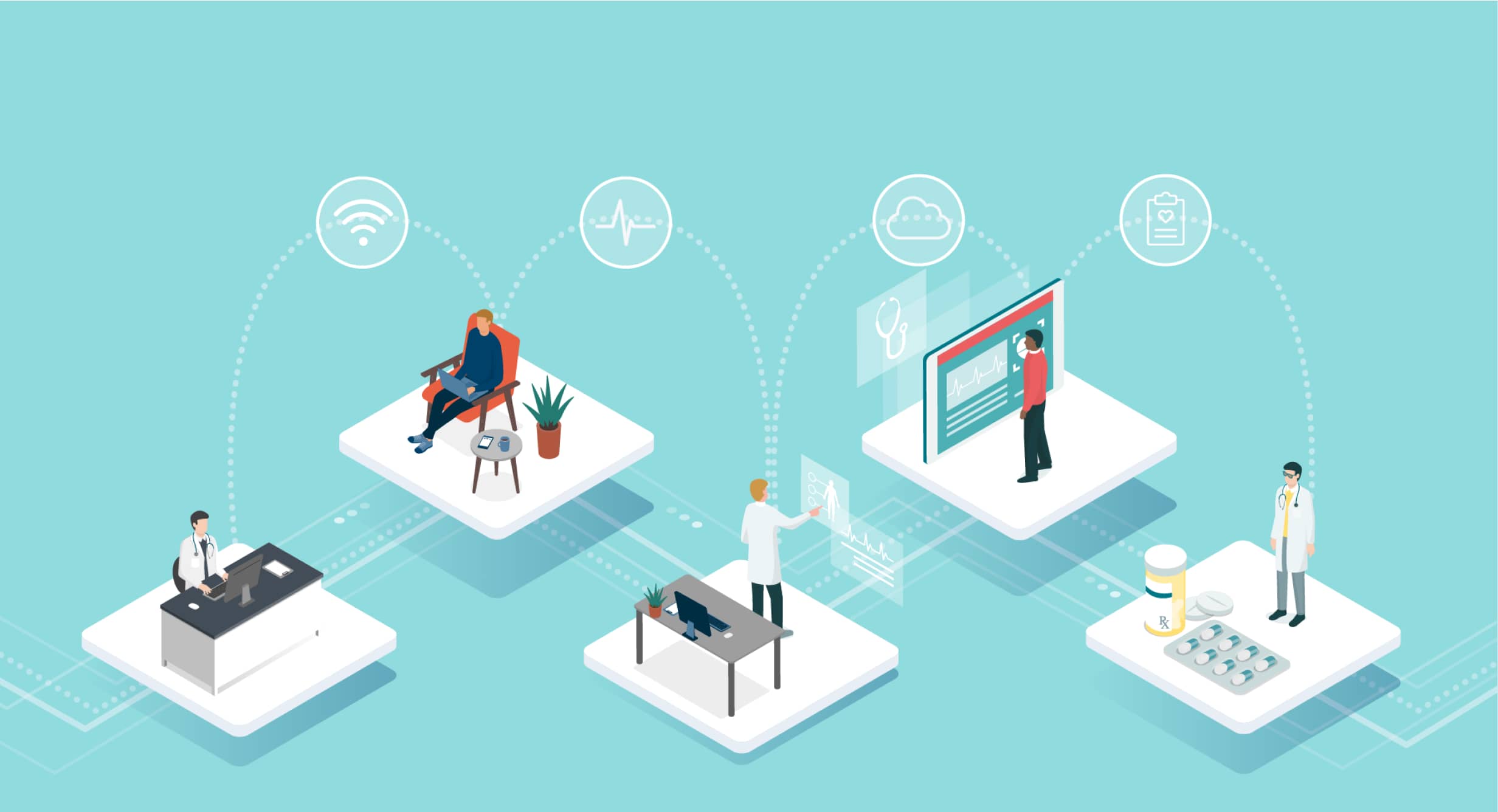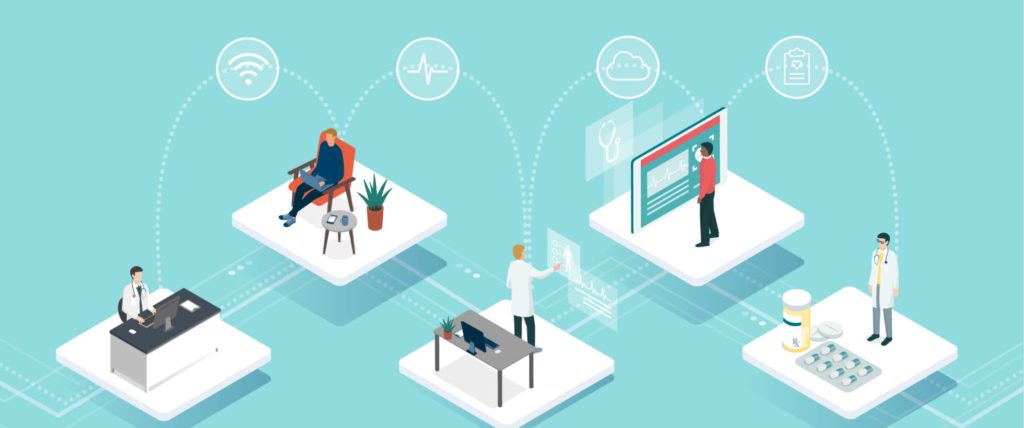
Clinic 20XX: The Future of Telehealth
- Deborah Wingler, PhD
- Melissa Hoelting
- Babak Soleimani, PhD
- Upali Nanda, PhD
Why Is This Important?
Telehealth has been poised to revolutionize the health care industry for more than a decade. Yet providers, consumers, payers, and policymakers have resisted widespread adoption until now, which has limited its application and effectiveness in the industry.
Five years after the original Clinic 20XX report in collaboration (led by the Center for Advanced Design Research And Evaluation) we were preparing to refresh our research when COVID-19 struck. Across the United States, telehealth received a boost as a majority of non-critical care moved online. During this rapid uptick in telehealth services, we asked ourselves: “What has been the effect of COVID-19 on telehealth and what are the implications for clinic design moving forward?”

What We Did
As health care organizations explore how they will integrate telehealth into their current service offerings moving forward, it is critical to understand the perspective of those who deliver care on how they want to experience, deliver and utilize virtual care in the future.
To provide new insight into physician preferences and perceptions of virtual care and their perspective on the greatest challenges and opportunities for telehealth moving forward, an online survey was conducted with a nationwide panel of 103 family medicine and internal medicine physicians who utilized telehealth to deliver virtual care during the height of the pandemic. The survey focused on obtaining their perspectives of the patient and provider experience, as well as implications for future clinic design.

What We Found
In summary, we believe that telehealth will be an additive component to primary care, especially for family medicine and internal medicine, allowing health providers more business continuity, extended access and greater convenience. Our overall findings are as follows:
The 2020 telehealth experiment is still waiting on results.
79% of physicians say telehealth would have some impact on the quality of health outcomes. Of those, 35% said it was too early to know what that impact might be.
Telehealth’s greatest opportunity is also one of its greatest challenges.
While increased access was considered the greatest opportunity for telehealth in the future, physicians noted patient access to the internet and technology as the third greatest challenge behind reimbursement and patient adoption.
We have seen a glimpse of what can be, but also the gaps in getting us there.
Physicians consider reimbursement as a primary challenge moving forward. To reflect a new era of distributed care across physical and digital realms, reforms to reimbursement and medical liability will be necessary.
Not every health interaction is tele-ready.
Some health interactions are better suited to telehealth, some are better suited to an in-person visit, and some are agnostic- and can be either in-person or virtual. 88% of physicians who delivered primary care visits, compared to only 20% of physicians who provided oncology services.

The power of personal touch is more important than ever.
51% of physicians said telehealth would have a negative impact on the quality of interactions with patients in the long-term due to limitations on the ability to perform a physical exam and the lack of personal interactions.
Space needs have not reduced, they have shifted.
55% of physicians feel that telehealth will have some impact on the spatial needs of clinics moving forward. However, 32% of those physicians think the impact will be neutral. Through open-ended responses, physicians that indicated a neutral impact clarified that they felt modifications may be needed, the overall footprint of clinics would remain the same.
Tele-integrated clinics help maintain business continuity by leveraging footprints & cloudprints in agile ways. Stepping into 2021 we need systems where our physical interactions are mirrored in digital space and vice-versa, creating redundancies for care delivery.

What the Findings Mean
Application
The pandemic has highlighted the need for fully integrated telehealth to provide access to care and ensure business continuity now and in the future. Health care organizations have a tremendous opportunity to build upon the lessons learned during COVID-19 to transform care delivery in the future.
As technologies advance and care delivery models morph, the boundaries between the physical and digital environments will continue to blur. It is essential to ensure that our clinic facilities seamlessly and effectively support the integration of virtual care into their physical spaces.
Agility between digital (cloudprint) and physical (footprint) assets, equity in terms of digital access and in-person and virtual interactions, and enhanced human experience will all be key components of telehealth as we continue the quest for better health outcomes.

Future
In this report, we share insights from our physician survey as they relate to telehealth, the rapid adoption of it during COVID-19, and predictions for how sustained this change may be. This first edition on telehealth is one of several timely, topically themed sections that will build to the larger report refresh. Through this refresh, including a patient survey, we will further investigate the impact of a change-ready clinic on the physical design of clinic facilities, and the fundamental duality that will drive design as a digital/physical hybrid.
All images courtesy of CADRE Research.
